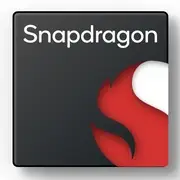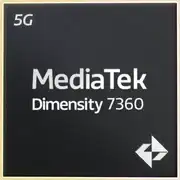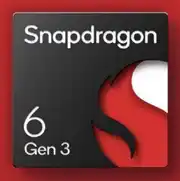Qualcomm Snapdragon 685 vs MediaTek Helio G99
SoC Comparison Result
Mobile Processor Comparison: Qualcomm Snapdragon 685 vs MediaTek Helio G99
Choosing a mid-range smartphone often comes down to comparing processors that determine performance, battery life, and user experience. In this article, we'll take a closer look at two popular chips - Qualcomm Snapdragon 685 and MediaTek Helio G99 - highlighting their strengths and weaknesses, and providing real-world device examples.
Architecture and process technology
Qualcomm Snapdragon 685:- Process technology: 6 nm (TSMC)
- Cores: 4 x Kryo 265 Gold (Cortex-A73) cores up to 2.8 GHz + 4 x Kryo 265 Silver (Cortex-A53) cores up to 1.9 GHz
MediaTek Helio G99:- Process technology: 6 nm (TSMC)
- Cores: 2 x Cortex-A76 cores up to 2.2 GHz + 6 x Cortex-A55 cores up to 2.0 GHz
Although the Snapdragon 685 has a higher frequency, the Helio G99 uses newer and more powerful Cortex-A76 cores, which provides better performance and energy efficiency with a similar process technology.
Graphics performance
- The Snapdragon 685 is equipped with the Adreno 610 GPU, known for its stability and optimization for games.
- The Helio G99 uses the Mali-G57 MC2 GPU, offering higher graphics performance in tests like 3DMark and handling demanding games better.
Benchmark Performance
In popular AnTuTu and Geekbench benchmarks, the Helio G99 demonstrates superiority over the Snapdragon 685. For example, in AnTuTu, the Helio G99 scores around 415,000 points, while the Snapdragon 685 reaches around 354,000 points. In Geekbench tests, the advantage of the Helio G99 is even more noticeable, especially in single-core tasks, which highlights its better performance in everyday and demanding applications.
Power Efficiency and Battery Life
Both processors are manufactured using a 6 nm process technology and provide good battery life. However, thanks to the modern Cortex-A76 cores, the Helio G99 demonstrates less heating and better battery life under long loads (for example, during long gaming sessions).
Usage Scenarios and Real-World User Experience
- Gaming Tasks:
- PUBG Mobile:
- Snapdragon 685: Medium settings, ~30-40 FPS
- Helio G99: High settings, stable 50-60 FPS
- Call of Duty Mobile:
- Snapdragon 685: Medium settings, 40-50 FPS
- Helio G99: High settings, stable 55-60 FPS
- Genshin Impact:
- Snapdragon 685: Low settings, around 25 FPS with drops
- Helio G99: Low-medium settings, around 30 FPS with minimal drops
- Everyday Tasks (social media, browsing, video): Both processors handle everyday tasks well. Users note the smooth operation of the interface and applications on both chips.
- Multitasking and heavy apps: The modern cores in the Helio G99 give it an advantage in multitasking and heavy apps (video and photo editors).
Cameras and multimedia
Both chips support cameras up to 108 MP and Full HD video recording. The Helio G99 has a slight advantage due to improved image processing algorithms and an integrated AI processor (APU).
Prices and availability of devices
Smartphones with Snapdragon 685 usually have more attractive prices and are available in almost all markets. Models with Helio G99 are more often focused on performance and multimedia, which slightly increases their cost.
Device examples
On Snapdragon 685:
- Xiaomi Redmi Note 12 4G
- Xiaomi Redmi Note 13 4G
- Vivo V40 Lite
- Honor X7c
On Helio G99:
- POCO M5
- Realme 10
- Infinix Zero 20
- Tecno Camon 20 Pro
Software and support
Smartphones on Snapdragon often receive stable updates and good software optimization due to Qualcomm's close cooperation with manufacturers and software developers.
Helio G99 also receives regular updates, especially from brands such as Xiaomi, Realme and Infinix, but sometimes there are compatibility issues in rare gaming titles.
FAQ
- Which processor is better for gaming? Helio G99 is preferable for games, especially those that are graphically demanding.
- Is there 5G support? Both processors only support 4G LTE.
- Which chip is more energy efficient? Helio G99 shows slightly better energy efficiency.
Final recommendations
- Choose Snapdragon 685 if stability, good software support, availability and an attractive price are important.
- Choose Helio G99 if performance is a priority, especially in gaming, multimedia and multitasking.
In summary, both processors are excellent solutions in the mid-range, and the final choice depends on your individual needs and usage scenarios.
Advantages
- Higher Frequency: 2800 MHz (2800 MHz vs 2200 MHz)
- Newer Launch Date: March 2023 (March 2023 vs May 2022)
Basic
GPU Specifications
Connectivity
Memory Specifications
Miscellaneous
Benchmarks
Related SoC Comparisons
Share in social media
Or Link To Us
<a href="https://cputronic.com/en/soc/compare/qualcomm-snapdragon-685-vs-mediatek-helio-g99" target="_blank">Qualcomm Snapdragon 685 vs MediaTek Helio G99</a>









